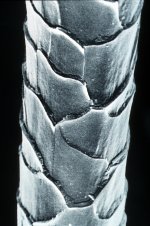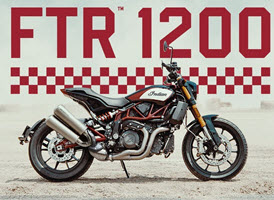You are using an out of date browser. It may not display this or other websites correctly.
You should upgrade or use an alternative browser.
You should upgrade or use an alternative browser.
Engine heat
- Thread starter MickyC51
- Start date
Walrus
Active member
Have not had a similar experience with the FTR. However I changed my pipes to low-slung Toce and did tune.
Experienced same issue last weekend test riding a new Harley Sportster, which baked my leg like my old V-Rod.
Can suggest carbon fiber exhaust wrap, which cools things down a bit. Or spring for new exhaust. Not all Twins do this. My Ducati certainly doesn't and neither do my other Harleys.
Experienced same issue last weekend test riding a new Harley Sportster, which baked my leg like my old V-Rod.
Can suggest carbon fiber exhaust wrap, which cools things down a bit. Or spring for new exhaust. Not all Twins do this. My Ducati certainly doesn't and neither do my other Harleys.
I'm not a big fan of after market exhaust. I like quiet and they are getting a bit stricter here in NY. While looking on line I saw a suggestion for taking out the catalytic converter. They said it makes it noticeably cooler but I don't know the consequences so I'm a bit hesitant.
I have a few other bikes but the FTR was becoming a favorite. I'd hate to banish it till the winter.
I have a few other bikes but the FTR was becoming a favorite. I'd hate to banish it till the winter.
It's brand new. Only 600 miles I can't imagine a tune helping much.Koop rolling. It's a V-twin with the headers on the right side...
(btw, a tune greatly reduced the amount of generated exhaust heat)
Walrus
Active member
I did mine right after break in.It's brand new. Only 600 miles I can't imagine a tune helping much.
We do have inspections but really it's just brakes and lights. But then I don't know because they just passed an exhaust law requiring a sound test so that it's a quiet as stock. I don't know if they started checking more thoroughly as to the CAT.Does NY still have state inspections?
De-cat could be issue
That's where I am now. I should bring it to the dealer for it's first check and ask. It'll probably be the last time the dealer will touch it.I did mine right after break in.
Charliemurphay
Well-known member
The cat is THE major source of heat on this bike. Getting rid of the cat greatly reduces felt heat. That said if you don’t want an aftermarket exhaust, then you just kinda learn to put up with it. New or old, a Lloydz tune does dramatically improve performance on the FTR.
Key_to_life
New member
You will fail inspection if your have aftermarket anything as your exhaustWe do have inspections but really it's just brakes and lights. But then I don't know because they just passed an exhaust law requiring a sound test so that it's a quiet as stock. I don't know if they started checking more thoroughly as to the CAT.
Please, what is a Lloydz tune?The cat is THE major source of heat on this bike. Getting rid of the cat greatly reduces felt heat. That said if you don’t want an aftermarket exhaust, then you just kinda learn to put up with it. New or old, a Lloydz tune does dramatically improve performance on the FTR.
Charliemurphay
Well-known member

FTR Flash
V6 FTR Flash INCREASED POWER INCREASED FUEL EFFICIENCY INCREASED RIDEABILITY Products U.S. & Canada Sold out International Sold out *The Indian Motorcycle Warranty excludes damages or failures resulting from the use of aftermarket components or calibrations Click for FTR tuning locations!
The most consistent and reliable tune available for the FTR. Increased power (regardless of aftermarket exhaust, though it helps to have one) smoothes out the twitchy throttle curve, and essentially eliminates the cold stalling problems many stock FTR’s have (especially the 1st gens).
You can either remove your ECU and send it to them for them to flash, or you can find a remote tuning center dealer close to you and bring your bike into them locally and have it done in about half an hour.
Ive run both a FuelMoto tune and the Lloydz tune. The Lloydz one is definitely preferable in my opinion and the one I am running now.
There aren’t emission inspections on bikes in the states.You will fail inspection if your have aftermarket anything as your exhaust
Doing a cat delete with the stock mufflers should be fine
kungfoojesus
Member
“Aramid” fiber weave textile pants A rated. Not lined. Woven into the only layer.
80-120 gsm textile weight merino leggings underneath
Get it right and you won’t feel the sun or the burn of a slide or pipe. Aramid fiber options (aramid is a family of fibers) dissipates heat better than aluminum, per gram per density.
If you’re just wearing cotton denim you’re basically wearing an unforgivable sponge of death and water vapor is hotter than air at the same temperature, cuz denser energy.
The wool has scales on it that open and close over a primary wicking core. They close off and open to regulate and or moderate evaporative heating and cooling.
Cotton is fine in extremely low humidity if you’re in the desert arid regions for example.
I prefer smartwool in the heat because it’s 70/30 merino/poly but we are technically better off with a pure 100wt merino because wool doesn’t melt on a slide to your skin.
Hand wash wool, it will go full holiest of holes on you in the lighter weights I’m speaking of unless you own a very nice front loading washer and don’t load it with zippers, buttons, and grommets wielding garments. It doesn’t really need to be washed much it’s self cleaning and bacteria can’t grow on it (if it’s 100% merino wool).
You won’t need more than one t shirt for a full week of sweating and you’ll only need deodorant once a week. Not kidding, thin wool (80-120 gsm weight) beats the heat and stays clean.
Also if it gets soaked it retains 70% of its warmth unlike cotton and poly that are swamp coolers. It doesn’t get as mucky and slimey feeling against skin as any other textile, only alpaca wool beats it in this regard. Alpaca is a whole other topic though it’s not cooling it’s purely insulating as it’s hydrophobic and hollow air trapping fibers, completely useless for cooling.
I never go out without my thin merino baselayers. I melted my plastics to my body on a 90mph enduro slide down the interstate when I was young and needed skin grafts and got a seriously dangerous infection from the burns that would kill a man my current age.
Broke nothing, zero road rash. Barely any bruising due to low siding on a runway like a plane with no landing gear smooth as butter. However, the burns had me in the hospital for 2 weeks cost my insurance over $200,000 in intensive care unit and half a dozen skin grafts. Almost lost my leg to infection in the last 24 hours of antibiotic mayhem.
Aramid interweave textiles can not heat up enough on a slide to even cook an egg. Let alone whatever meat a human is called on some remote island somewhere. Thin wool cools you off and pulls the sweat away from your skin. It’s amazingly versatile. At a stop this combination will save your mountain oysters from a big bore Harley. It’s not a silver bullet but it’s worth a shot.
Worst case scenario you’ve got some rly durable work pants and nice layers to wear for yard work if you don’t find these items useful on the bike.
I learned a lot from through hiking the back country for 4 years while selectively homeless and it has done wonders for my motorcycle gear choices.
Hopefully this knowledge helps you look into information on what is wrapping your legs friend!
Microscopic view of wool scales closed over a wicking core.

Brief wiki of aramid family.
https://en.m.wikipedia.org/wiki/Aramid
Also keep a close eye on Ultra High Molecular Weight Polyethylene (UHMWPE) otherwise known as Ultra 100 and Ultra 200. It’s a textile pushed forward and to market early during the plandemic shutdowns. I’m not sure where it stands yet but I’m now building some riding gear with it and seeing what happens in very brutal testing.
80-120 gsm textile weight merino leggings underneath
Get it right and you won’t feel the sun or the burn of a slide or pipe. Aramid fiber options (aramid is a family of fibers) dissipates heat better than aluminum, per gram per density.
If you’re just wearing cotton denim you’re basically wearing an unforgivable sponge of death and water vapor is hotter than air at the same temperature, cuz denser energy.
The wool has scales on it that open and close over a primary wicking core. They close off and open to regulate and or moderate evaporative heating and cooling.
Cotton is fine in extremely low humidity if you’re in the desert arid regions for example.
I prefer smartwool in the heat because it’s 70/30 merino/poly but we are technically better off with a pure 100wt merino because wool doesn’t melt on a slide to your skin.
Hand wash wool, it will go full holiest of holes on you in the lighter weights I’m speaking of unless you own a very nice front loading washer and don’t load it with zippers, buttons, and grommets wielding garments. It doesn’t really need to be washed much it’s self cleaning and bacteria can’t grow on it (if it’s 100% merino wool).
You won’t need more than one t shirt for a full week of sweating and you’ll only need deodorant once a week. Not kidding, thin wool (80-120 gsm weight) beats the heat and stays clean.
Also if it gets soaked it retains 70% of its warmth unlike cotton and poly that are swamp coolers. It doesn’t get as mucky and slimey feeling against skin as any other textile, only alpaca wool beats it in this regard. Alpaca is a whole other topic though it’s not cooling it’s purely insulating as it’s hydrophobic and hollow air trapping fibers, completely useless for cooling.
I never go out without my thin merino baselayers. I melted my plastics to my body on a 90mph enduro slide down the interstate when I was young and needed skin grafts and got a seriously dangerous infection from the burns that would kill a man my current age.
Broke nothing, zero road rash. Barely any bruising due to low siding on a runway like a plane with no landing gear smooth as butter. However, the burns had me in the hospital for 2 weeks cost my insurance over $200,000 in intensive care unit and half a dozen skin grafts. Almost lost my leg to infection in the last 24 hours of antibiotic mayhem.
Aramid interweave textiles can not heat up enough on a slide to even cook an egg. Let alone whatever meat a human is called on some remote island somewhere. Thin wool cools you off and pulls the sweat away from your skin. It’s amazingly versatile. At a stop this combination will save your mountain oysters from a big bore Harley. It’s not a silver bullet but it’s worth a shot.
Worst case scenario you’ve got some rly durable work pants and nice layers to wear for yard work if you don’t find these items useful on the bike.
I learned a lot from through hiking the back country for 4 years while selectively homeless and it has done wonders for my motorcycle gear choices.
Hopefully this knowledge helps you look into information on what is wrapping your legs friend!
Microscopic view of wool scales closed over a wicking core.

Brief wiki of aramid family.
https://en.m.wikipedia.org/wiki/Aramid
Also keep a close eye on Ultra High Molecular Weight Polyethylene (UHMWPE) otherwise known as Ultra 100 and Ultra 200. It’s a textile pushed forward and to market early during the plandemic shutdowns. I’m not sure where it stands yet but I’m now building some riding gear with it and seeing what happens in very brutal testing.
Last edited:

